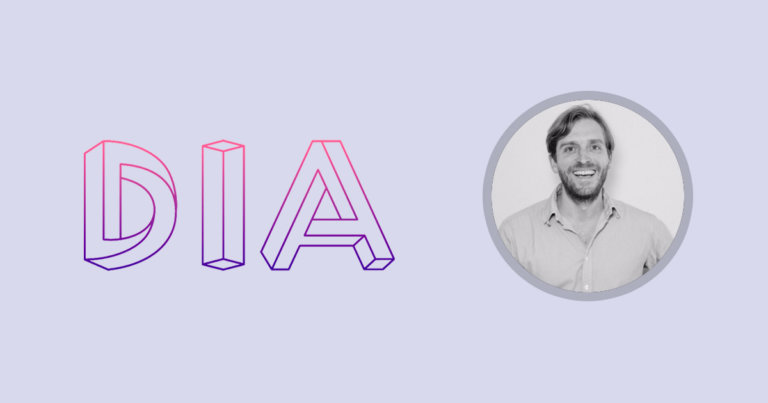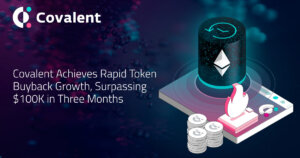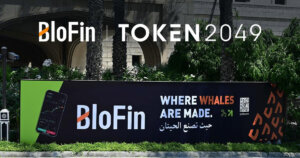 DIA Co-Founder Paul Claudius on providing transparent data oracles for the DeFI economy
DIA Co-Founder Paul Claudius on providing transparent data oracles for the DeFI economy DIA Co-Founder Paul Claudius on providing transparent data oracles for the DeFI economy

Cover art/illustration via CryptoSlate. Image includes combined content which may include AI-generated content.
CryptoSlate recently had the opportunity to chat with Paul Claudius, the Chief Operating Officer of DIA. Paul is a serial entrepreneur and financial markets expert. Before co-founding DIA, he was Director Europe of the nu3 group, transforming the multi-million e-commerce business into a vertically integrated brand.
Paul started his professional career as part of BNP Paribas Corporate Development in New York City and AXA Private Equity in Frankfurt am Main. Paul has advised and invested in multiple start-ups in health tech, IOT and e-commerce. At DIA, he manages the business development and strategy.
This interview was featured in collaboration with the premier virtual conference BlockDown. The highly anticipated third edition of the conference, BlockDown 3.0 will take place on October 22-23 featuring some of the crypto industries’ top names.
Sign up for your free ticket here.
Interview with Paul Claudius, DIA COO & Co-Founder
DIA has been making headlines in the Crypto- and specifically the DeFi-sphere lately as a promising oracle project. Can you give an overview of what DIA is?
With DIA, we are building a Wikipedia for financial data and information. The market for financial data, both in the cryptosphere as well as the traditional financial markets is characterised by a lack of transparency, steep costs and centralised provision. Only a handful of players dominate the markets. We think this can be done better for the whole of the community, which is why we founded DIA with the vision of breaking down these barriers to access. DIA is a platform that incentivises the crowd-driven provision and validation of financial data and information for the traditional and decentralised financial markets. DIa makes high-quality financial data open-source and accessible to everyone.
We can already see a few projects active in the space. How does DIA differ from them? What is unique about your approach?
Yes, there are some great products on the market provided by projects including the likes of Chainlink and Band and others. However, being true believers of the benefits of decentralisation, we were not satisfied with the available approaches to the challenges we see. The central difference between existing projects to DIA is the approach to sourcing and validating data. Seeing the many data based attacks and glitches in the DeFi market and the enormous funds lost in their wake, we designed DIA as a fully open source platform. We are convinced that transparency is the only way to really ensure alignment towards the highest quality of data. This is why DIA provides a platform and infrastructure to incentivize the community to source and validate data.
Making data available open-source and for free seems like a brash move. What inspired you to come up with this specific approach?
In 2017 / 2018 we had a need for data feeds ourselves, while developing financial products and dApps. In this process, we were not easily able to find truly transparent data sources. This is when we started leveraging the power of the crowd to source data directly from public sources like exchanges and APIs. We soon realised that this approach, combined with a crypto-economic incentive scheme solves challenges regarding trust and scalability that no other project currently does.
How does this sourcing and validation model work? And how does DIA’s governance token come into play?
Existing feeds that match the requirements of a specific dApp or product can simply be connected. All the relevant information to do so is available via DIA’s documentation. For non-existing data sets, anyone can submit a data request ticket and fund it with DIA tokens. These are currently hosted on Gitcoin.com and are pushed to our developer and analyst community who can work on these, for instance by writing exchange API scrapers. Once they are publicly submitted to our Github, anyone can stake DIA tokens if they believe to have a better solution. The community then votes on the best solution and the bounty is rewarded to its author. In addition, our governance token can be used to submit and vote on governance proposals. DIA is transitioning to a full DAO as we believe that this project should be community owned and driven.
Who are you targeting with DIA? Which types of clients are you approaching? How will you tap a market that seems to be already served or will you tap into new segments?
We are currently heavily focussed on the rapidly growing DeFi space. As projects mature and the value locked in DeFi platforms grows, incentives for malicious behaviour grow and a reliable and auditable data layer becomes more and more crucial. We believe that it is imperative for the market and its actors to not only rely on single oracle providers. Plurality and competition not only increases the pressure to provide the best possible solutions, but drives innovation and reduces the risk of singular, centralised data provision. In addition, we see the same issues in traditional financial markets, where transparency is a scarce good and the stakes are even higher.
The current DeFi hype is often being compared to the altcoin hype of 2017. Do you think that is a fair assessment? How do you expect the space to change in the coming months and years?
Yes and no. Hype phases always show similar characteristics and some of the recent, staggering growth numbers remind us of what happened three years ago. Similarly there are many meme projects popping up in the slipstream of successful projects. The fundamental difference we see is that there are many serious projects on the market developing sensible products and seeing significant traction. We are nowhere near the levels that we aim for, which is nothing short of matching traditional financial markets. This will take time and we expect to see more surges and dips in the future as jumps in development and maturity are made. We are optimistic that the essential building blocks of the ecosystem will be created. Patience and resilience are key.
Your recent token offering seems to have been a success. What would you say are the most influential factors for a successful token distribution in 2020?
This taps into the previous question. The community has become much more critical in our view. Projects with a thought-through product vision, a strong interdisciplinary team, real and proven application use cases as well as a clear and sensible vision for future development have a natural advantage. Transparency and communication is key. The brainless hype of seemingly random, buzzword filled whitepapers attached to websites with a slick design seems to be largely over.
What are your plans for the near future? Are you planning any bigger projects or programs that you’d like to share?
Our current focus lies on integrating DIA into the market, closing strong partnerships and continuing to improve our product and growing our community. One project we are particularly excited about is DIA Labs. Off the back of our recent success, we want to foster the development of building blocks that fill the gaps in the data ecosystem. We do this by backing teams and individuals with financial and operational support. More news about DIA Labs will be published in the near future on our communication channels.





























































